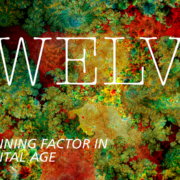- Unlock the potential of AI in Digital Media - 4. December 2023
- This was created with the Help of Ai. - 4. December 2023
- Gaming in a nutshell: what kind of personas should brands look out for? - 26. July 2023
- Gaming as a communication channel - 7. December 2022
- THE RISE OF THE INDEPENDENT MEDIA AGENCY - 7. December 2022
- HOW YOUR BRAND CAN HELP SAVE LIVES - 12. September 2022
- Enhancing the Digital Media Landscape with Blockchain - 8. June 2022
Will the blockchain enhance the digital media landscape and if so, what are the barriers?
By looking at the fundamentals of the blockchain technology and projecting them onto the principles of the digital media landscape, we begin to notice a common ground but with different terminology that creates a range of opportunities for those of wants.
In this article, we will project the blockchain infrastructure onto programmatic advertising, click fraud, and metrics reporting.
I assume by now, most of you are familiar with what the blockchain is, but for those who are still confused by this fancy term, I will try to explain it using a simple comparison:
IS BLOCKCHAIN A DATABASE (DB)?
Quick answer, no. Although they have a lot in common, they are completely different, and I will cover the why and how in this section.
From an architectural standpoint, DB is based on a client server methodology, where the client is the node or the user accessing the DB, and the server is the centralized node that, for simplicity’s sake, we are going to say is where the DB is hosted. On the other hand, blockchain is based on a distributed network that is interconnected through a node-to-node or peer-to-peer methodology. When a transaction occurs, Blockchain uses a consensus algorithm, which is called proof-of-work, to validate and then store or transfer through read and write operations only.DB is completely centralized, which means that a DB manager or operator has full control over the DB, and one user with access can create, read, update, and delete data. So, in one word, blockchain ensures transparency, which leads us into the next section of this article.
TRANSPARENCY
With the rise of click fraud, chaotic targeting, and limited budgets, advertisers are seeking various ways to protect their media spend and to maximize efficiency. Transparency is what they need to ensure all of the above.
Imagine company X is launching an awareness campaign where the media plan includes Display ads, Video Ads, Audio Ads, Native Ads, Proximity Ads, and many more.
In a traditional ecosystem, reporting will take place manually or in real-time (a fancy term), but the data is published manually or through data parsing from a third-party supplier.
How can company X ensure that their campaign reached the right audience, at the right time, in the right location and that the report in hand reflects the right views and right clicks actioned by the right audience and not by bots?
Blockchain technology ensures transparency in the whole digital landscape through multiple applications from click fraud detection, fake traffic, and domain spoofing to precise tracking and ad buying.
Thanks to the Proof-of-View and the likes of PoV technology that are sitting on the blockchain, advertisers can now ensure that the result in hand reflects what their content and pages really got, which will lead to efficiency. It can also track where and how their ads have been placed, which will enhance the reporting process and offer an accurate optimization.
Similarly, blockchain is offering an evolution in the media supply-chain – a chain that is interconnected by a middleman throughout.
Agencies, DSPs, Ad Exchanges, SSPs and publishers are all running their own ledgers and this is only because data is the main product in media, and every entity wants to keep the accessibility and the processing of this data within closed doors, which is centralization at its best.
Obviously, the main loser in this is the advertiser. However, from an effectiveness point of view, the healthy media supply chain should be backed by the blockchain where advertisers, agencies, DSPs, Ad-exchanges, SSPs, and publishers are forming this network and working on a shared ledger to authenticate, validate, and exchange.

This will provide all entities the ability to agree on every single transaction, to know where the metrics are coming from and how they are changing over time, and finally, to approve and validate the authenticity of the delivery, which can trigger the automated payments, and all will be governed by smart contracts.
The opportunities are limitless, but like any tech-evolution, obstacles will pop up – creating adoption barriers where some are systematic and others are technical. Here are a few just for clarity:
- Speed of transaction and validation (that is why it is recommended to not transform the whole supply-chain, but rather transform the crucial parts that require validation and authentication).
- Data is the product and once it becomes decentralized, companies fear losing control and IP.
- Conflict of interest: blockchain imposes a necessity for different players, even competitors, to collaborate.
- Competition within the one industry: the fact that all parties are being exposed in a decentralized system creates a challenge, especially between the competitors whose main goal is to own the bigger share of that pie (Advertiser).
- And much more…
Blockchain will create an evolution in the media world by forcing transparency, accuracy, and authenticity, but the main question remains: when will we see a mass adoption within the industry? In my opinion, we’re still far from it, but for most of you who are struggling with the “How?” my advice is to forget about the how and to focus on the why and the what.
The how starts like any transformation – with requirement gathering – and goes into the normal transformation lifecycle, and there’re plenty of good players who can support on this.







